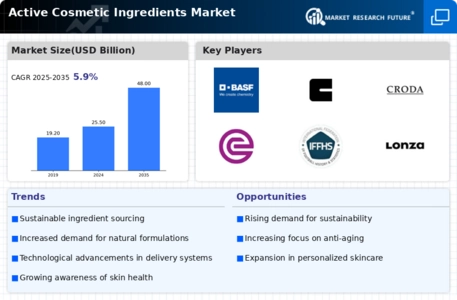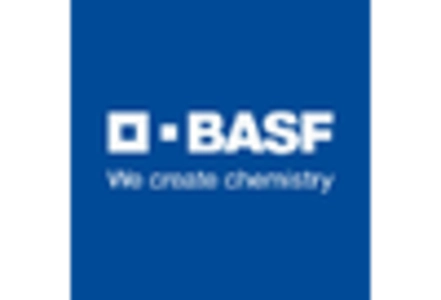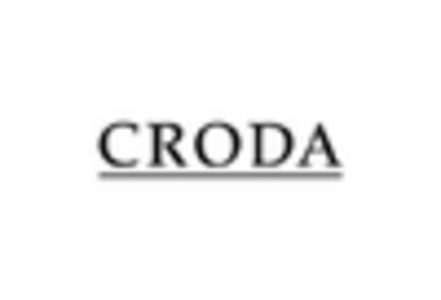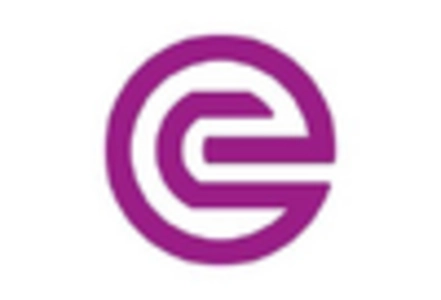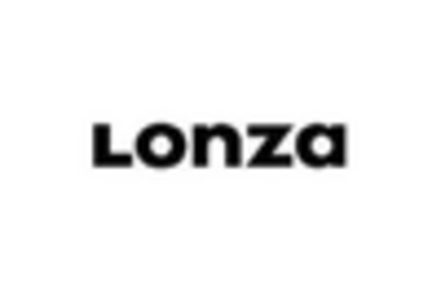Rise of Clean Beauty Trends
The Active Cosmetic Ingredients Market is witnessing a significant shift towards clean beauty, where consumers prioritize products free from harmful chemicals and synthetic additives. This trend is indicative of a broader societal movement towards health and wellness, with consumers becoming more discerning about ingredient transparency. Data suggests that the clean beauty segment is expected to capture a substantial share of the market, with a projected growth rate of around 8% annually. Brands are increasingly formulating products with naturally derived active ingredients, which not only align with consumer preferences but also enhance brand loyalty. As the demand for clean beauty continues to rise, the Active Cosmetic Ingredients Market is likely to adapt, focusing on sustainable sourcing and eco-friendly practices.
Increased Focus on Skin Health
The Active Cosmetic Ingredients Market is increasingly aligning with the growing consumer focus on overall skin health. This trend encompasses not only aesthetic concerns but also the desire for products that promote skin barrier function and hydration. Research indicates that consumers are more inclined to invest in products that offer multifunctional benefits, such as moisturization, protection, and repair. The skin health segment is projected to grow at a rate of around 5% annually, driven by the rising awareness of the importance of maintaining healthy skin. As a result, brands are reformulating existing products and developing new ones that incorporate active ingredients known for their skin health benefits, thereby enhancing the Active Cosmetic Ingredients Market.
Expansion of E-commerce Channels
The Active Cosmetic Ingredients Market is experiencing a transformative shift with the expansion of e-commerce channels. The rise of online shopping has made it easier for consumers to access a wide range of cosmetic products, including those featuring active ingredients. Data shows that e-commerce sales in the beauty sector are expected to grow by over 10% annually, reflecting changing consumer shopping habits. This shift not only provides brands with a broader reach but also allows for targeted marketing strategies that cater to specific consumer needs. As e-commerce continues to flourish, the Active Cosmetic Ingredients Market is likely to adapt its distribution strategies, focusing on enhancing online presence and optimizing the consumer shopping experience.
Growing Demand for Anti-Aging Products
The Active Cosmetic Ingredients Market is experiencing a notable surge in demand for anti-aging products. This trend is largely driven by an aging population that seeks effective solutions to combat signs of aging. According to recent data, the anti-aging segment is projected to grow at a compound annual growth rate of approximately 7% over the next five years. Consumers are increasingly turning to products containing active ingredients such as retinoids, peptides, and antioxidants, which are known for their efficacy in reducing wrinkles and improving skin texture. This growing interest in anti-aging formulations is likely to propel the Active Cosmetic Ingredients Market forward, as manufacturers innovate to meet consumer expectations for visible results and enhanced skin health.
Technological Advancements in Formulation
The Active Cosmetic Ingredients Market is benefiting from rapid technological advancements in formulation techniques. Innovations such as nanotechnology and encapsulation methods are enhancing the delivery and efficacy of active ingredients in cosmetic products. These technologies allow for better penetration of active compounds into the skin, resulting in improved performance and consumer satisfaction. Market analysis indicates that the incorporation of advanced formulation technologies could lead to a growth rate of approximately 6% in the coming years. As brands strive to differentiate themselves in a competitive landscape, the integration of cutting-edge technologies is likely to play a pivotal role in shaping the future of the Active Cosmetic Ingredients Market.


